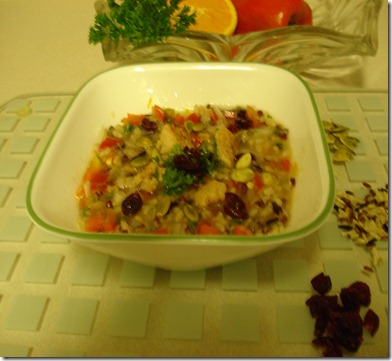Fruits are the best snacks. They are terrific sources of nutrients—vitamins, minerals and phytochemicals.
But kids with multiple allergies may not be able to eat from the entire variety of fruits. Some fruits are known to produce allergic reactions, especially fruits like mangoes, papayas, pineapples, bananas, avocados, some kinds of berries, and in rare cases, apples.
It is good practice to follow a few precautions before trying any new food, even fruit. One strategy is to mash and apply that food to the skin to see if it produces any kind of itching, rash, redness or hives. Even if no such symptoms occur, it is wise to give a very small quantity while introducing that food for the first time. Allergic reactions can appear after several hours, so it is best to watch and wait before continuing to serve the new food.
Allergists recommend that all fruits should be washed thoroughly. Many fruits have been treated with pesticides and fungicides. Peeling is important, especially when fruits and veggies have been waxed, as in the case of apples, pears, cucumbers and squashes,
Conventionally grown strawberries are often treated with a fungicide and must be washed well.
No plant/fruit wants to be eaten. Some have ways of fighting back, with chemical ‘weapons’ which can attack the body’s immune system, producing a damaging mediator, namely, histamine.
Some fruits cause allergy-like reactions because they contain histamines—e.g. bananas, pineapples, avocados.
Pineapples and papayas contain certain protein breaking enzymes which can attack the mast cells, which are a part of the body’s immune system. Nutritionists recommend that these fruits should not be eaten on an empty stomach. Canned pineapple is safe, as the heat used in canning destroys this enzyme. Mango is another such fruit and must be introduced with caution.
Dried fruits are often treated with sulfites to prevent them from browning. Kids with asthma could react to sulfites.
Fruits and veggies fall into certain botanical categories, ‘food families’. Although it helps to know which ‘family’ a fruit or a vegetable belongs to, there is no thumb rule which indicates that a child who is allergic to a food from a certain group will be allergic to other foods from the same group. Kids allergic to ragweed, may not necessarily be allergic to bananas which belong to the same family as ragweed.. There can be cross reactions with pollens such as birch pollens with apples. Even peaches, plums and cherries are know to affect kids with birch pollen allergy.
The keyword here is caution. The good news is that there are lots of options with fruits.
MORE ‘FRUITY FACTS’
One apple has more fiber than a serving of oatmeal. A medium apple has nearly 160 g of potassium, somewhat similar to oranges and bananas. Researchers in the UK say that kids who are big apple eaters have better lung function and are at a lower risk of asthma.
Orange juice, when taken with meals, increases the absorption of iron and calcium from food.
Juice with pulp is better than pulp free juice. Fruit pulp not only contains fiber, but it also has minerals like calcium, vitamins and antioxidants.
Most fruits are high in Vitamin C, the big antioxidant. Berries and citrus fruits are great sources of this vitamin. Fruits, as key sources of Vitamin C are extremely important for kids who are on regular maintenance medications for allergy. Since steroids reduce the absorption of Vitamin C from the gut, these kids need to have that extra bit of Vitamin C.
An avocado is a fruit, not a vegetable. It has 60% more potassium than a banana, and is cholesterol free. It contains the good, monounsaturated fatty acids like olive oil. Mashed avocado can be used as a butter alternative—just add pinch of salt and spread it on those rice crackers.

